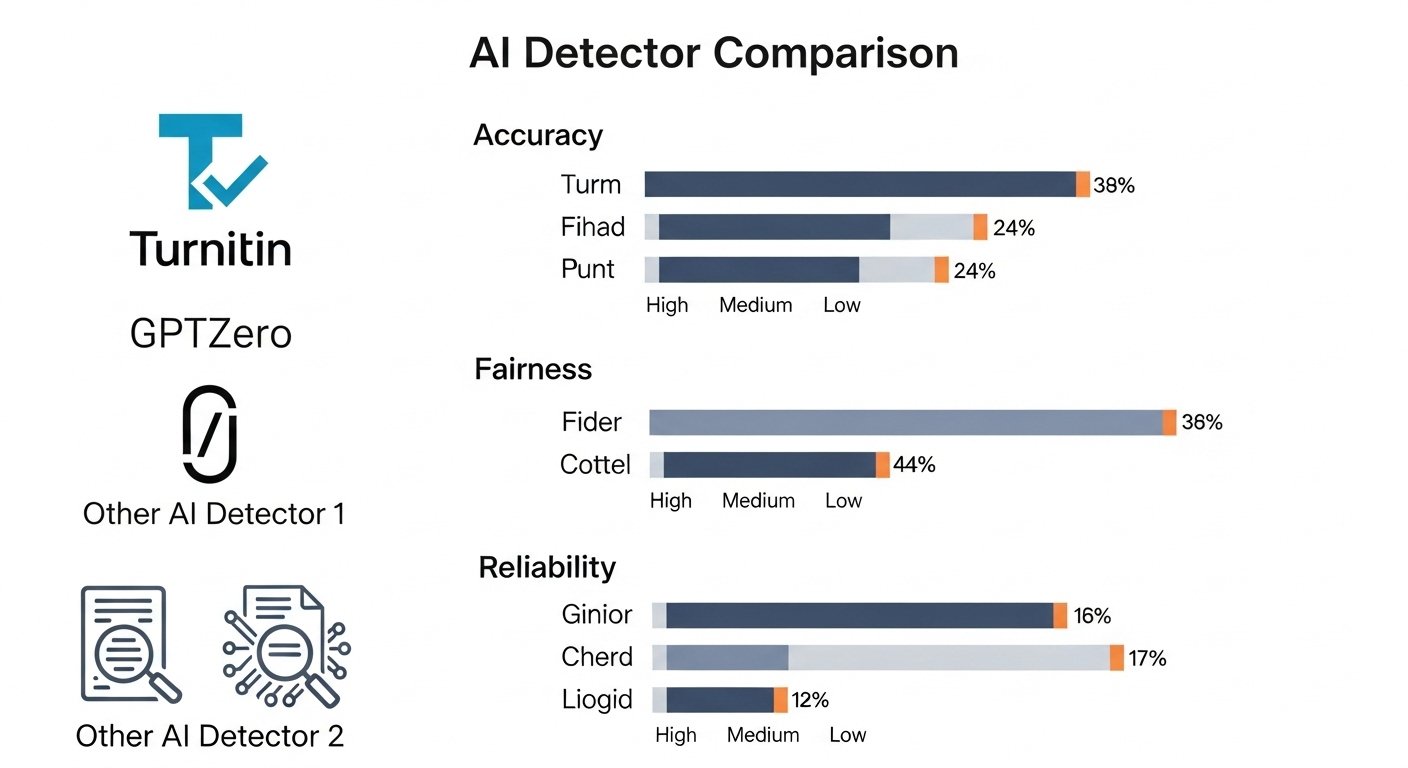In today’s academic landscape, the rise of generative artificial intelligence (AI) tools—such as ChatGPT—has created new challenges and ethical questions for institutions like Georgia Northwestern Technical College (GNTC). One of the key questions students and faculty alike ask is: what AI detector does GNTC use? Knowing the answer can help students understand how their work might be evaluated and how to navigate policies around AI-generated content. In this article, we’ll explore what is known (and what isn’t) about GNTC’s approach to AI detection, how AI detectors function in higher education, real-world implications, and tips for students.
What we know: GNTC and AI usage
GNTC’s stance on generative AI
While searching for a definitive source, it appears that GNTC has publicly acknowledged the use of generative AI in its learning ecosystem. For example, GNTC’s Library Services page defines ChatGPT and discusses how generative AI tools operate. In addition, GNTC was noted as part of a major partnership through the Technical College System of Georgia (TCSG) and the Georgia Research Alliance in a National Science Foundation project aimed at leveraging AI for online education.
These references show GNTC is engaged with AI topics—but they do not confirm a specific detector tool in use.
What we don’t have: A definitive tool name
A blog post on a website called Toolbing claims that GNTC uses a tool combining GPTZero and Turnitin’s AI-writing detection. However, this claim is not supported by an official statement from GNTC itself (at least none publicly traced). Thus, at the time of writing, there is no publicly verifiable confirmation from GNTC explicitly naming the AI detector tool being used.
What AI detectors are and how they work
What is an AI detector?
An AI detector is a software tool designed to estimate whether a piece of text was generated—either wholly or partially—by an AI language model like ChatGPT or Google Gemini. For example, GPTZero is described on Wikipedia as “an artificial intelligence detection software developed to identify artificially generated text.”
Detection methods and limitations
Detection tools commonly rely on patterns of language use. They measure things like perplexity (how predictable the text is given a model) or burstiness (variability in sentence structure) to gauge “humanness.” However, these tools are fraught with limitations:
-
A 2023 study found many detectors scored below 80 % accuracy, and only 5 of 14 tools exceeded 70 %.
-
Another study found detectors are biased against non-native English speakers; texts from non-native writers were more likely to be flagged incorrectly.
-
Some detectors can be bypassed through prompt engineering or paraphrasing.
Why schools use them
Educational institutions use AI detectors for academic integrity: to discourage students from submitting large portions of AI-generated work without disclosure, and to support genuine student authorship. But given the limitations, many institutions pair them with instructor review, plagiarism checks, and policy discussions rather than relying solely on detection software.
What the evidence suggests about GNTC’s detector
Given the absence of a clear official statement, we can only infer from available clues:
-
GNTC acknowledges generative AI: The library page defines ChatGPT and offers resources about AI.
-
Third-party claim: A website (Toolbing) states “GNTC uses GPTZero + Turnitin AI detector”
-
No public confirmation: GNTC’s own public documents do not list a specific tool for AI detection at the time of this article.
Therefore: While it’s possible GNTC uses Turnitin’s AI-writing detector (or GPTZero) or a combination, it cannot be stated with certainty. Students should proceed with caution—but also with the assumption that some form of AI detection may be in place.
Practical student implications at GNTC
If you are a student at GNTC, here’s what to keep in mind, given the uncertainty around the detector tool:
Best practices for your work
-
Write your assignments in your own voice; avoid having an AI craft major portions of your submission without revision.
-
If you use AI tools (for brainstorming, citation generation, etc.), check your course/policy for disclosure requirements.
-
Review your syllabus or assignment prompt for any mention of AI use, detection, or academic-integrity policy.
-
When in doubt, ask your instructor: “Which AI detector is being used, and how are AI-generated segments treated?”
Risks to be aware of
-
Because AI detectors are imperfect, there is some risk of false positives—especially if you are a non-native English writer or use highly structured writing.
-
Some instructors may rely on detectors + manual review; thus your work may be flagged not just automatically but also by human review.
-
Even if the tool is not publicly named, the institution may still apply AI detection behind the scenes.
Why the exact answer matters
Knowing exactly what AI detector GNTC uses matters for several reasons:
-
Transparency: Students benefit from knowing the tool and its limitations so they can responsibly use AI-support tools.
-
Trust & fairness: If you know which detector is used, you can better understand how it might interpret your writing—especially if you’re a non-native speaker or have a distinctive writing style.
-
Compliance with policy: Some detectors allow editing or blending AI/human writing; others do not. Knowing which tool helps you align with policy.
-
Academic integrity: Being aware of detection protocols helps you avoid unintentional violations and shows you are taking your academic responsibilities seriously.
What to do if you face AI-detector concerns
If you believe your work might be flagged by an AI detector—or if you already have—here are steps you can take:
-
Request your instructor or academic-integrity office to clarify the detector used and how results are interpreted.
-
Ask for feedback on flagged sections: Was it flagged because of unusual writing style, formatting, or suspected AI use?
-
Retain versions of your drafts, edits, and AI-tool interactions (if you used them) to document your authorship and revision process.
-
Seek help from writing labs or tutoring at GNTC to refine your writing style and ensure it appears authentically human.
Final Thoughts
In summary: What AI detector does GNTC use? – You likely cannot answer that with certainty based on publicly available info. While a credible claim exists (Toolbing stating GNTC uses GPTZero and Turnitin) there is no official confirmation from GNTC. What you can rely on is that GNTC recognizes the role of generative AI tools and likely has protocols for AI detection or academic integrity around it.
For you as a student, the most important takeaway is to prioritize original writing, check your syllabus and policy, and communicate with your instructors. Transparency and responsible use will serve you well in a landscape where AI and human authorship increasingly overlap.
FAQs
Q1: Is GNTC definitely using Turnitin’s AI-writing detector?
A1: Not confirmed — while there is a third-party claim that GNTC uses Turnitin (and GPTZero), no official GNTC document publicly names the tool at the time of writing.
Q2: Can I ask my instructor which AI detector is used?
A2: Yes — asking for clarity is entirely reasonable and can help you understand how your work may be evaluated.
Q3: If I used ChatGPT for brainstorming, will I be flagged?
A3: Possibly — it depends on how much AI-generated content remains in your submission, how much editing you did, and whether your institution allows AI use. Best practice: Use AI as a tool, then make substantial edits in your own voice.
Q4: Are AI detectors always accurate?
A4: No — studies show that some detectors have less than 80 % accuracy and may have biases (e.g., non-native writers flagged incorrectly).
Q5: If I know which detector GNTC uses, does it change how I write?
A5: Yes — knowing the detector might help you tailor your writing to emphasise authenticity, proper citation, and original voice, reducing risk of false flags or misunderstandings.








Leave a Reply